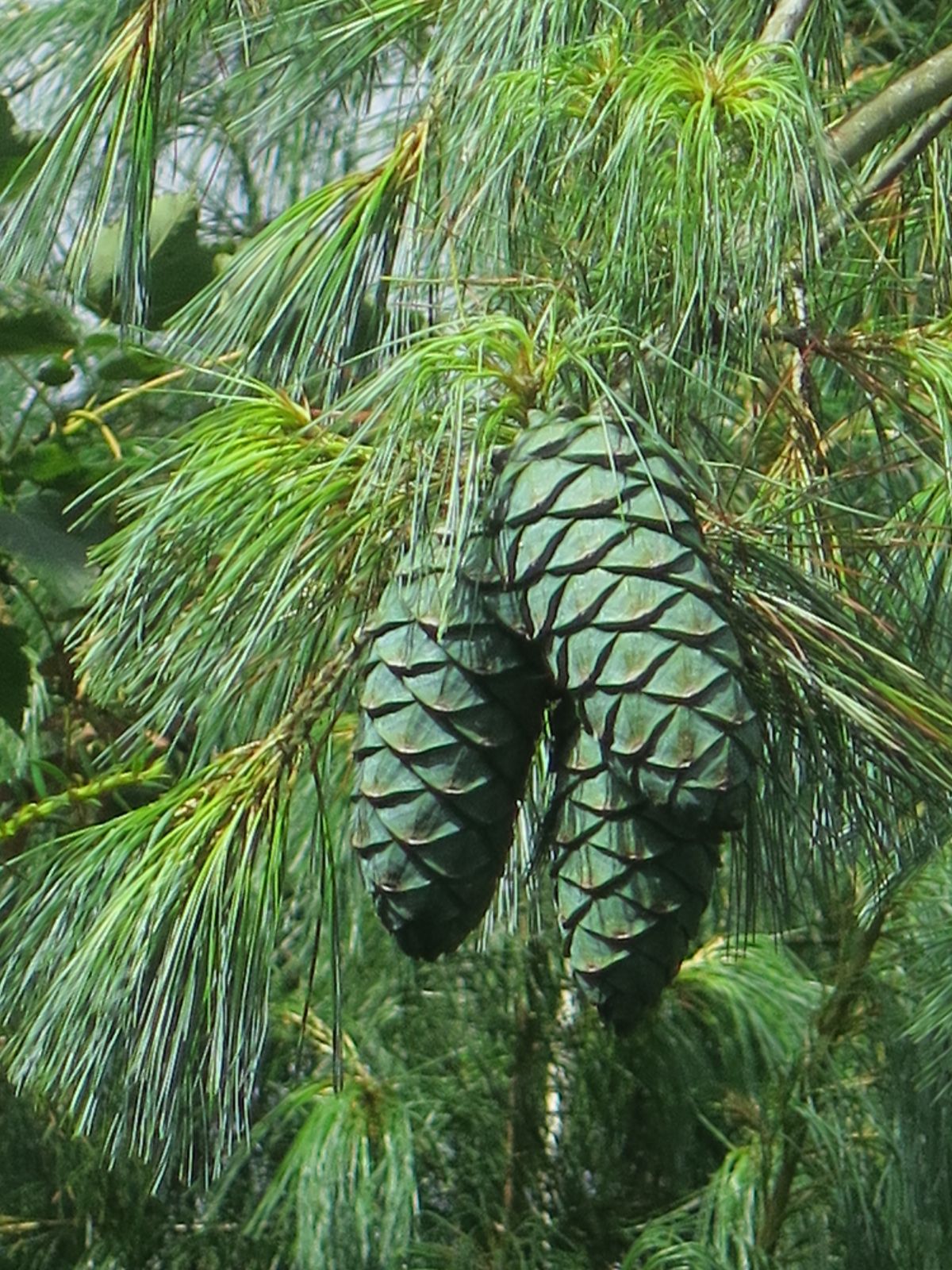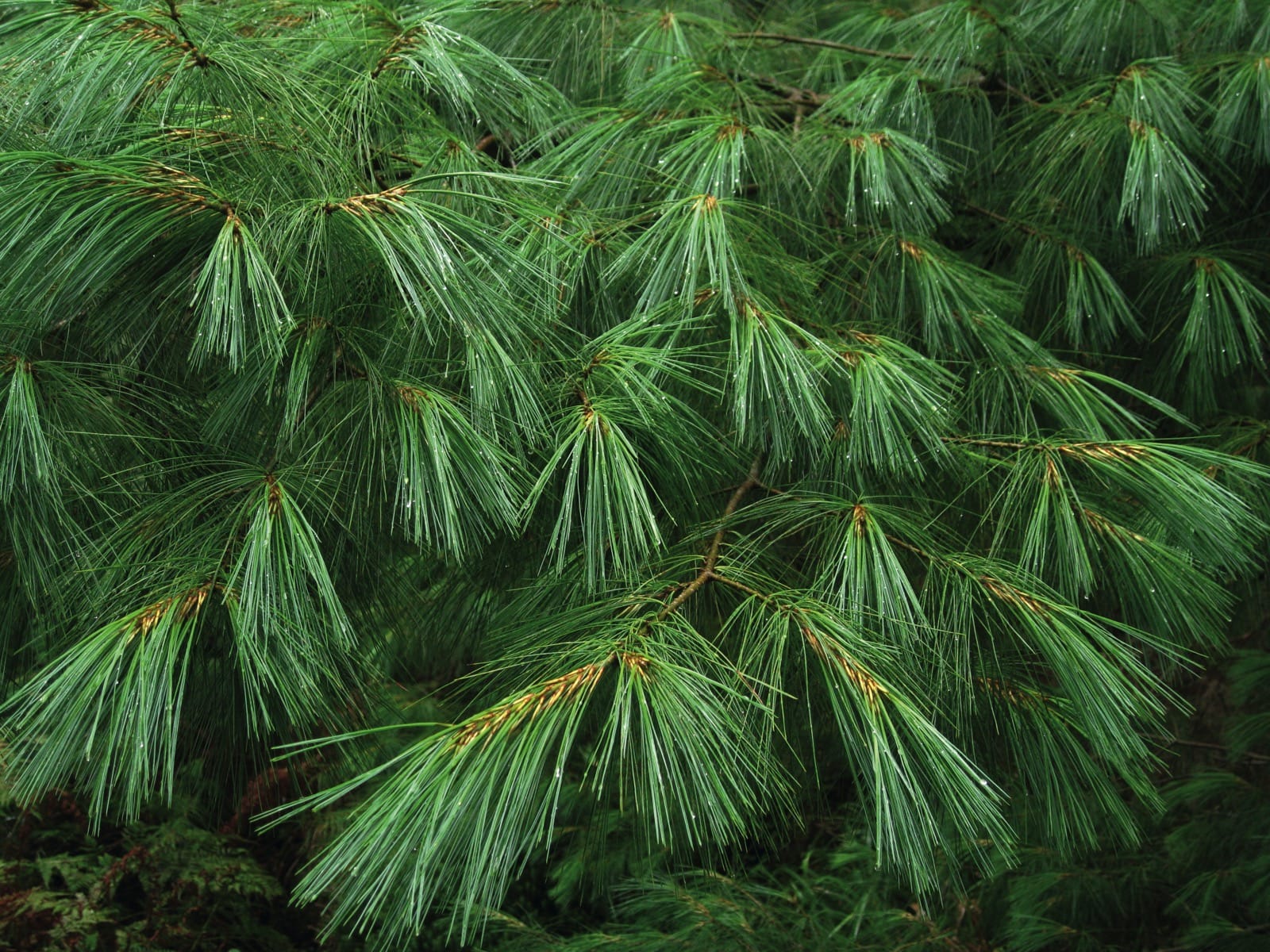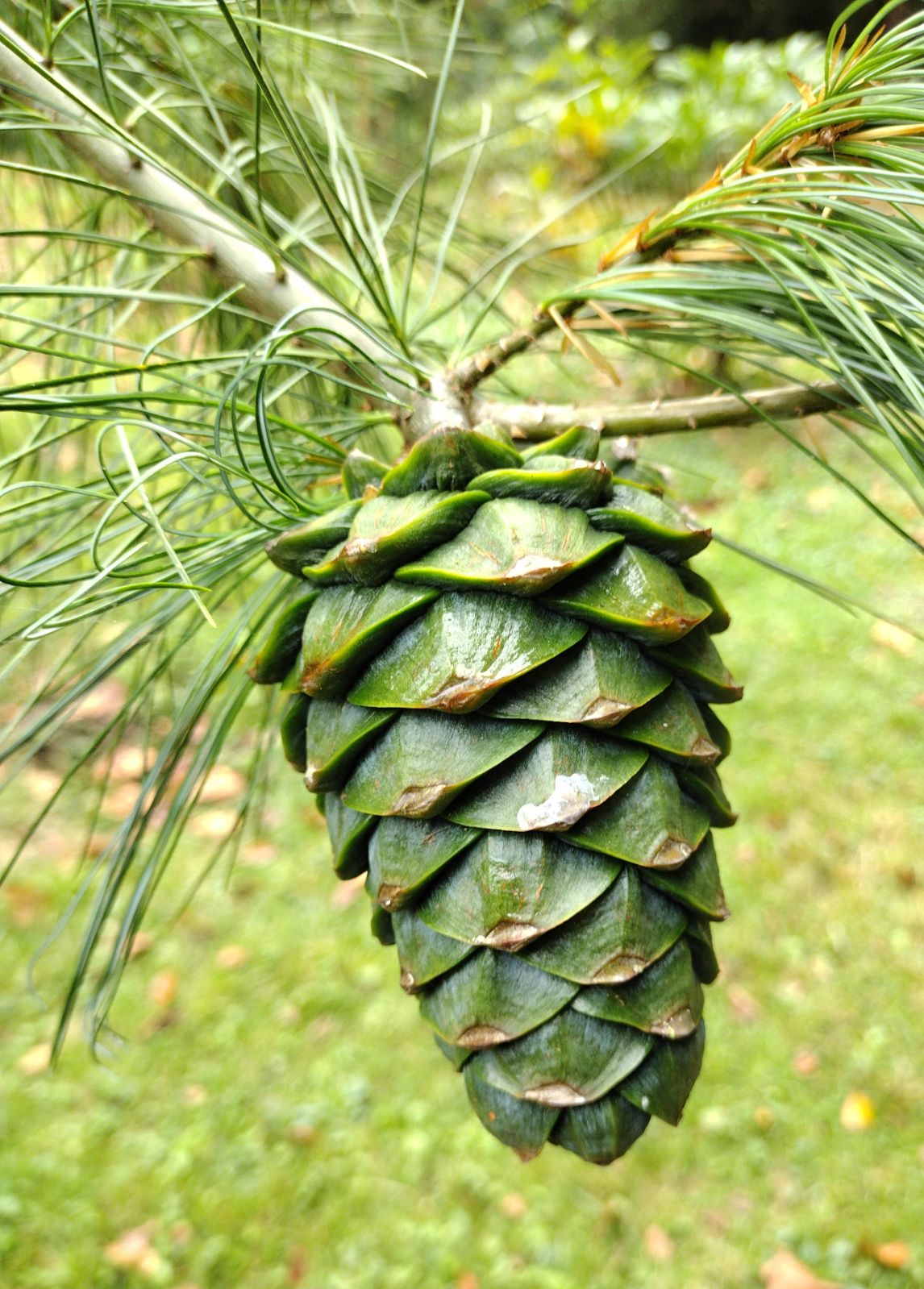Pinus armandii
Credits
Article from Bean's Trees and Shrubs Hardy in the British Isles
Article from New Trees by John Grimshaw & Ross Bayton
Recommended citation
'Pinus armandii' from the website Trees and Shrubs Online (treesandshrubsonline.
Genus
- Pinus
- Subgen. Strobus, Sect. Quinquefolius
Common Names
- David's Pine
Infraspecifics
Other taxa in genus
- Pinus albicaulis
- Pinus arizonica
- Pinus attenuata
- Pinus ayacahuite
- Pinus balfouriana
- Pinus banksiana
- Pinus bhutanica
- Pinus brutia
- Pinus bungeana
- Pinus canariensis
- Pinus cembra
- Pinus cembroides
- Pinus chiapensis
- Pinus contorta
- Pinus coulteri
- Pinus culminicola
- Pinus densata
- Pinus densiflora
- Pinus devoniana
- Pinus durangensis
- Pinus echinata
- Pinus edulis
- Pinus elliottii
- Pinus engelmannii
- Pinus eremitana
- Pinus flexilis
- Pinus gerardiana
- Pinus greggii
- Pinus × hakkodensis
- Pinus halepensis
- Pinus hartwegii
- Pinus heldreichii
- Pinus henryi
- Pinus × holfordiana
- Pinus hwangshanensis
- Pinus jeffreyi
- Pinus johannis
- Pinus koraiensis
- Pinus lambertiana
- Pinus leiophylla
- Pinus longaeva
- Pinus massoniana
- Pinus maximartinezii
- Pinus monophylla
- Pinus montezumae
- Pinus monticola
- Pinus morrisonicola
- Pinus mugo
- Pinus muricata
- Pinus nelsonii
- Pinus nigra
- Pinus oocarpa
- Pinus orizabensis
- Pinus palustris
- Pinus parviflora
- Pinus patula
- Pinus peuce
- Pinus pinaster
- Pinus pinceana
- Pinus pinea
- Pinus ponderosa
- Pinus pseudostrobus
- Pinus pumila
- Pinus pungens
- Pinus quadrifolia
- Pinus radiata
- Pinus remota
- Pinus resinosa
- Pinus rigida
- Pinus roxburghii
- Pinus sabiniana
- Pinus serotina
- Pinus sibirica
- Pinus strobiformis
- Pinus strobus
- Pinus sylvestris
- Pinus tabuliformis
- Pinus taeda
- Pinus taiwanensis
- Pinus teocote
- Pinus thunbergii
- Pinus torreyana
- Pinus virginiana
- Pinus wallichiana
- Pinus wangii
- Pinus yunnanensis
A medium-sized tree in the wild, with very much the aspect, in a young state, of P. wallichiana; young shoots greyish green, often covered at first more or less densely with translucent glands. Leaves in fives, mostly falling the second year, 4 to 6 in. long, white with stomata on two sides, glossy green on the third, pointed, minutely toothed on the margin; leaf-sheath soon falling away. Cones 4 to 8 in. long, 21⁄2 to 3 in. wide before expanding, tapering slightly from the base. Scales thick, broadly triangular, about 11⁄4 in. long. Bot. Mag., t. 8347.
Native of western and central China, particularly common in the south-west, where it extends into Burma; it also occurs in Formosa and (according to some authorities) in Korea. A closely related species (not further mentioned) is found in the Japanese islands of Yakushima and Tanega-shima – P. amamiana Koidz. P. armandii is named after the great French missionary-naturalist Père Armand David, who discovered it in Shensi in 1873. It was introduced to Britain by Augustine Henry, who sent seeds to Kew from Mengtsz in S. Yunnan in 1897. But two years previously seeds had reached Maurice de Vilmorin at Les Barres from the French missionary Père Farges.
The trees at Kew raised from the seeds sent by Henry grew quickly when once established, and first bore cones (infertile) in 1909. Two of these trees still exist; they are 52 and 60 ft high respectively, and about 33⁄4 ft in girth (1971).
P. armandii, although of interest as one of the very few pines of China, is of no value as an ornamental tree and does not thrive so well as the Himalayan five-needled pine – P. wallichiana. From this it is easily distinguished by its relatively broad scarcely tapered cones with thick scales.
P. armandii was reintroduced by Wilson for Messrs Veitch in 1900 and again for the Arnold Arboretum in 1908. Probably most trees in private collections are from this source or from seeds collected by Kingdon Ward in Yunnan. A specimen at Wakehurst Place, Sussex, pl. 1914, measures 60 × 43⁄4 ft (1970).
From the Supplement (Vol. V)
specimens: Kew, 52 × 41⁄2 ft (1981); Wakehurst Place, Sussex, pl. 1914, 60 × 43⁄4 ft (1970); Borde Hill, Sussex, Gores Wood, 69 × 33⁄4 ft (1981); St Clere, Kent, 56 × 51⁄4 ft (1983); Saltram, Devon, 72 × 51⁄2 ft (1984); Tregrehan, Cornwall, 56 × 53⁄4 ft (1979); Dupplin Castle, Perths., 67 × 61⁄4 ft (1983); Kilmacurragh, Co. Wicklow, Eire, 60 × 7 ft (1980); Blandsfort, Co. Laois, Eire, 70 × 41⁄4 ft (1980).
There are young plants at Kew and Wakehurst Place from Keith Rushforth 360, collected near Kunming in 1980.
From New Trees
Pinus armandii Franch.
(Subgen. Strobus, Sect. Quinquefolius)
Chinese White Pine, Armand’s Pine
This species was described by Bean (B210, S372) and Krüssmann (K210). A key to the varieties is provided below.
| 1a. | Male strobili slender, cylindrical, drooping; apophyses reddish brown to brown, slightly recurved; Taiwan | var. mastersiana |
| 1b. | Male strobili stout, ovoid-ellipsoid, erect; apophyses yellowish brown to yellow | 2 |
| 2a. | Leaves short (5–14 cm); cones medium-length (< 17 cm), scales with a recurved margin; China (Dabie Shan) | var. dabeshanensis |
| 2b. | Leaves longer (10–20 cm); cones variable in length (7–25 cm), scales straight; China (west, south), Myanmar (?) | var. armandii |
var. dabeshanensis (W.C. Cheng & Y.W. Law) Silba
Common Names
Dabie Shan Pine
Synonyms
P. dabeshanensis W.C. Cheng & Y.W. Law
P. fenzeliana var. dabeshanensis (W.C. Cheng & Y.W. Law) L.K. Fu & Nan Li
This variety has shorter leaves than var. armandii (5–14 cm long, vs. 10–20 cm in the type) and slightly shorter cones (<17 cm long, vs. 7–25 cm in the type), with the apophyses recurved as in var. mastersiana. Fu et al. 1999c. Distribution CHINA: Anhui (Jingzhai, Yuxei), Henan (Shangcheng), Hubei (Luotian, Yingshan). Habitat Grows on cliffs and between large rocks in the Dabie Shan, between 900 and 1400 m asl. USDA Hardiness Zone 8– 9. Conservation status Vulnerable. Illustration Businský 1999, Fu et al. 1999c.
The Dabie Shan Pine has had a slightly chequered taxonomic history, often accepted as a local variant of the widespread Pinus armandii with shorter leaves and smaller cones, though treated by Flora of China as a variety of P. fenzeliana (Fu et al. 1999c) – an approach that is not without merit, as both share cones with reflexed scale tips. Businský (1999) retains it as a separate species, P. dabeshanensis. It is very rare in the wild, with only a few trees known (Businský 1999). It was introduced to cultivation from a collection made in Anhui in 1999 by Roman Businský, under his number 46140, but only a single specimen survives, at the National Botanic Gardens, Kilmacurragh, Co. Wicklow (pers. comm. S. O’Brien, 2022).
[New Trees text: no survivors are now known (M. Gardner, pers. comm. 2007). TSO amended 7/7/22, JMG]
var. mastersiana (Hayata) Hayata
Common Names
Masters Pine
The male strobili of var. mastersiana are slender, cylindrical and drooping, while in the type variety they are stout, ovoid-ellipsoid and erect. The cone apophyses are reddish brown to brown, triangular and slightly recurved distally, while in var. armandii they are yellowish brown to yellow, rhombic, and recurved only at the umbo or not at all. Li & Keng 1994a, Fu et al. 1999c. Distribution TAIWAN. Habitat Mountainous regions between 2300 and 3000 m asl, with well-drained, acidic soils. USDA Hardiness Zone 7. Conservation status Endangered. Illustration Fu et al. 1999c; NT580, NT582, NT589. Cross-reference K210.
Pinus armandii var. mastersiana is the Taiwanese representative of its species, morphologically differing only slightly from the typical variety, into which it has some times been sunk by some dendrological authors (Dallimore et al. 1966, Bean 1976b). Its name commemorates the British botanist Maxwell T. Masters, now best known for his work on teratology, but in his time a recognised conifer expert. He died in 1907, shortly before Bunzô Hayata published the name. Due to its treatment in the past as a synonym it is not easy to pinpoint a date for its introduction, but it is inconceivable that it was not collected by early-twentieth century travellers in Taiwan: H.J. Elwes (1935) specifically mentioned seeing nutcrackers feeding on its seeds on his visit to Taiwan in 1912. The earliest tree identified as var. mastersiana traced in research for this book is an individual at Edinburgh, probably from C.N. Page 10106 (M. Frankis, pers. comm. 2007), accessioned in 1974. From the mid-1970s onwards, however, it has been regularly collected in Taiwan, by both Taiwanese collectors and westerners, although it remains relatively scarce, especially outside botanical gardens. In the 1970s it was gathered by Chris Page, from whose collections trees are growing at Benmore (C.N. Page 10058, 10109, 10316), and the variety is further represented in the Scottish botanical gardens (and others) by material deriving from the Edinburgh Taiwan Expedition of 1993 (ETE 39, 52, 62, 63, 65). The oldest trees at Kew and Wakehurst Place were grown from seed sent from the Taipei Botanic Garden and Taiwan Forestry Research Institute in 1979. At Kew one of these is currently about 12 m tall, forming a very attractive tree, although its wide-spreading branches suggest that it should be given ample space in which to develop its full potential. Var. mastersiana seems to thrive throughout the British Isles, but in colder climates may be less successful. A tree of wild origin at the Morris Arboretum is not very happy, suffering from winter burn and looking ‘rather thin’ by spring (A. Aiello, pers. comm. 2007). This is the only survivor of a group grown from seed received in 1983 from the Taiwan Forestry Research Institute, suggesting that a more sheltered site is desirable if it is to be attempted in the Philadelphia area. With its long, slightly bluish needles and substantial cones, var. mastersiana is a very attractive pine, but for horticultural purposes it is not very different from var. armandii (although Keith Rushforth finds that it grows faster: pers. comm. 2007).















